Deep links are an essential part of the mobile marketer’s toolkit.
Users have come to expect a personalized app experience, so sending push notifications that offer real value is essential for increasing app engagement.
Deep linking allows push notifications to send users directly to specific pages within an app, making it easy for users to reconsider an abandoned cart, view new content, shop a sale, or fall in love with new features.
In this article, we’ll cover the essentials of mobile app deep linking and how you can use them to send push notifications that delight your app users.
What Is Deep Linking?
According to AppsFlyer (a CleverTap partner), deep linking “allows marketers and product managers to provide two distinct types of journeys — one for app users and one for non-app users.”
If the user has the app, they can be “deep linked” seamlessly to specific content. If they don’t have the app, a mechanism called “deferred deep linking” kicks in, where the user is brought to the right app store so that they download, install, and launch the app, after which the relevant in-app content will be displayed.”*
Both of these have obvious benefits. For example, say you have a music streaming service and run a social media campaign to promote a song from a hot new artist. Your campaign includes an excerpt of the song, and when users click on it, they’re taken directly to your website to hear the full song. Deep linking makes this possible.
Contextual Deep Linking
On the other hand, contextual deep linking (also known as onboarding) is commonly used for gathering information on customers in order to personalize their user experience as they use your app. This type of deep linking relies on data such as demographics, how users navigate to the app, and more to provide an optimized experience.
For example, your app onboarding process might be different depending on what app storefront or other source (such as a paid campaign) the customer used to install your app. This may be because an app downloaded through a Facebook ad might look different from one downloaded from a Google display ad.
What Is Mobile App Deep Linking?
Deep linking, in simplest terms, is the ability to link directly to content in your app.
Instead of simply launching the app and leaving users at the home screen, tapping on a deep link brings users to a specific screen within your app. Think product pages, profiles, new content, or shopping carts. Deep links can take users to in-app content directly from:*
- Web link to app
- Ad to app
- Push notification to app
- SMS to app
- Email to app
- Social media post to app
- App to app
- Search result listing to app (using app indexing)
Deeplink to Improve the Mobile User Experience
Mobile users have high expectations. It’s not enough for apps to be fast, reliable, and secure — users demand a personalized experience.* And that’s exactly what deep links help you deliver.
A deeplink allows marketers and app developers to fine-tune the way users interact with their app.
With a deeplink, mobile marketers can design personalized campaigns that help users — providing useful and relevant content instead of a boring “Come back!” CTA.
In fact, for marketers, deep linking is a killer tactic for retention and engagement because it brings users to specific conversion points within the app, tailored by their past behavior or stated interests.
Benefits of Deep Linking in Mobile Apps
Deep linking is the perfect tool for marketers to drive engagement and conversions by bringing users to specific conversion points within the app, tailored by their past behavior or stated interests. ~ From our Glossary entry on Deep Linking
In simplest terms, deep links make for frictionless transitions and better user experiences.
Say you get a push notification about an item on your wishlist that’s now on sale. You tap the link to open the app and add the item to your cart, but a non-deep link will simply drop you off at the app’s home screen. You’ll have to navigate back to the product listing, which is annoying at best. You might even decide it’s not worth the trouble and close the app.
But a deep link brings the user directly to the content they want to see.
And they work: apps that implement deep links have been shown to double user retention* across 1-day, 7-days, and 30-days.
In fact, users who were sent deep links showed double the activation rate and visited the app twice as frequently as users who weren’t sent deep links.*
Deep Linking for Improved Conversions
Using deep links accounts for an average 66% rise in conversions.* That’s nothing to sneeze at.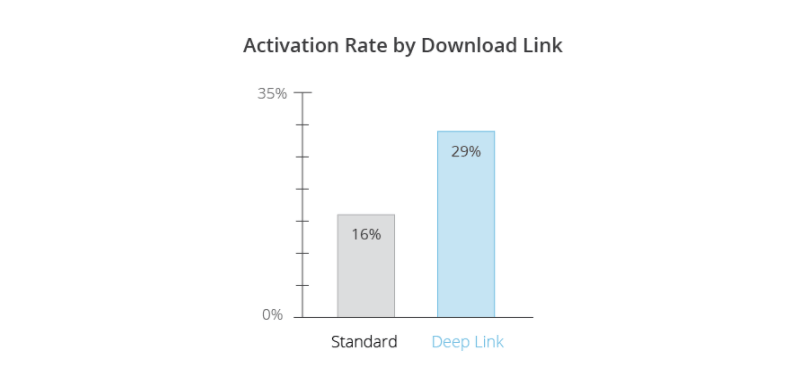
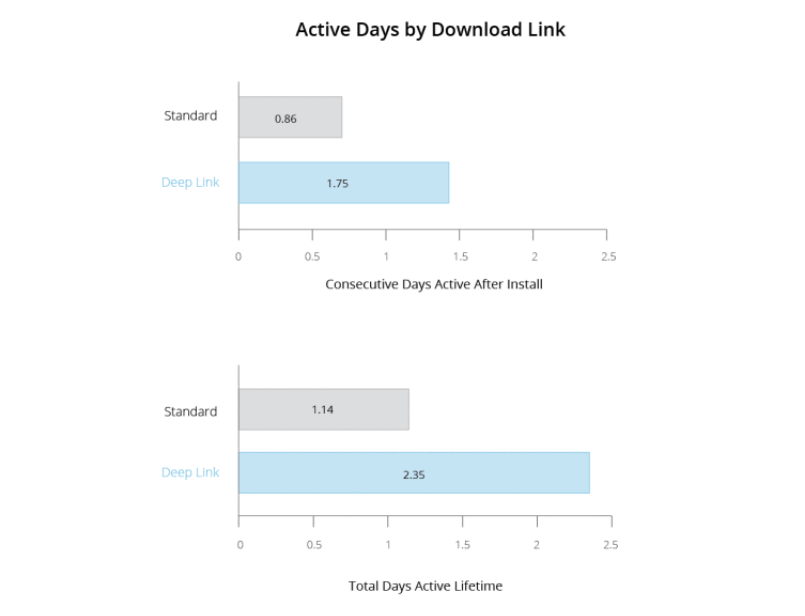
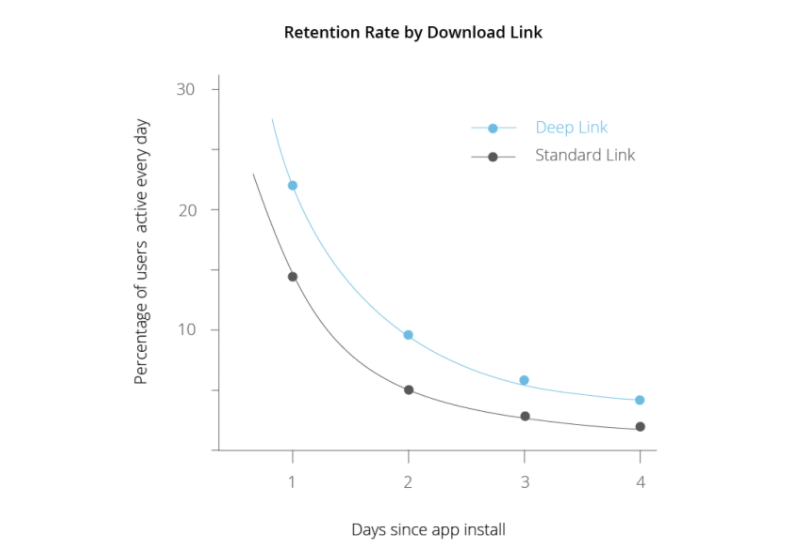
Images: TechCrunch

Deep Linking for Improved Email Engagement
CleverTap and Branch have a deep-linking integration, which improves email engagement and helps support improved user retention.* This integration makes emails even more effective by focusing on a user’s core interests. Email continues to be one of the most used channels for customer engagement.
Deep Linking Use Case: Duolingo Brings You Back to Your Lesson
Here’s another example from the popular language app Duolingo. As we know, apps spend significant money to acquire new users, often losing more than 60% of them after only the first couple of uses. Thus, it literally pays to try to ensure the new user completes their onboarding, so they can begin using —and seeing the benefits of—your app.
Duolingo boasts a deeply personalized onboarding flow. If you install the app and then for some reason you do not return, they reach out to you and remind you of your progress and how many steps are left to complete the onboarding.*
The Challenge of Mobile Deep Linking
Unfortunately, it’s not all a bed of roses. Mobile deep linking also has a major challenge in its implementation.
Unlike internet URLs and web addresses that are standardized across devices and platforms, deep links aren’t universal. To launch your Android app, you’ll need a different deep link from one needed to launch your iOS app. This could lead to confusion for software developers and mobile marketers alike, each needing to have different deep links depending on the mobile platform.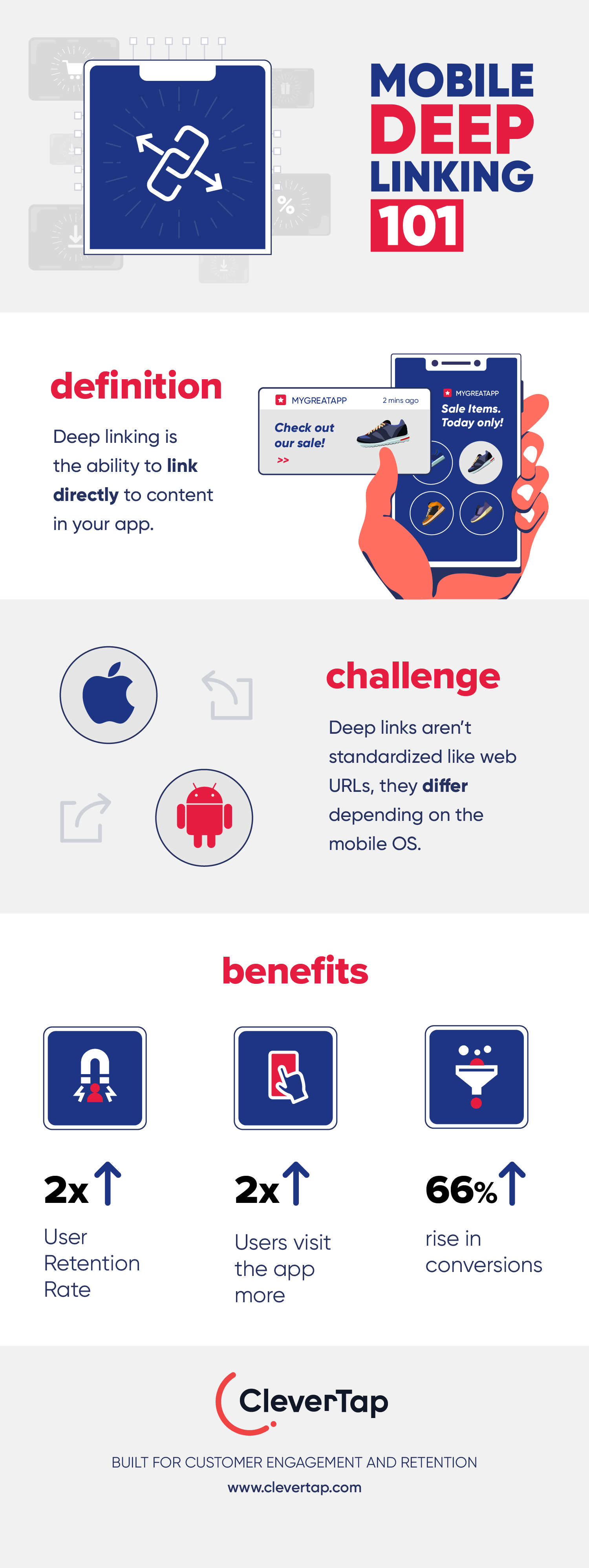
Mobile Deep Linking: How Does it Work?
As the app deep linking experts at Branch Metrics explain,* there are three standards for mobile deep links: URI schemes, Universal Links, and App Links.
URI Schemes
For a long time, URI schemes* were the main method for mobile app deep linking.
What’s a URI scheme? URI stands for Uniform Resource Identifier, a string of characters that identify a specific resource or note a type of content being requested.
Just like URLs point users to specific addresses on the web, URI schemes point to apps on a mobile device. Therefore, to launch Twitter on an iOS device, the URI would be twitter://. Or to start your mail app from a mobile web browser, your URI would begin with the familiar mailto://. Your mobile app can register its own custom URI scheme, like mygreatapp://.
But custom URI schemes aren’t a perfect solution. As Shannon Wu notes,* they present two significant problems:
-When the app isn’t installed, the user sees an error message.
-Because there’s no central registration system, more than one app can claim the same custom URI scheme.

Image: Tapstream
Because of these issues, Apple and Android created their own deep linking standards.
Universal Links and App Links
Universal Links are deep links created for iOS, while App Links are created for Android. With both Universal Links and App Links there’s a built-in fallback option that can redirect users to your website if the app isn’t installed.
Universal Links offer some advantages* over traditional URI schemes, including enhanced privacy and security. Apple has also implemented a central whitelisted domain, so no two apps can use the same naming conventions.
But not everyone is thrilled with Apple’s deep linking solution. For one, an app opened from a deep link will include an override button in the top right corner, giving users the option to view the content in their mobile web browser instead.
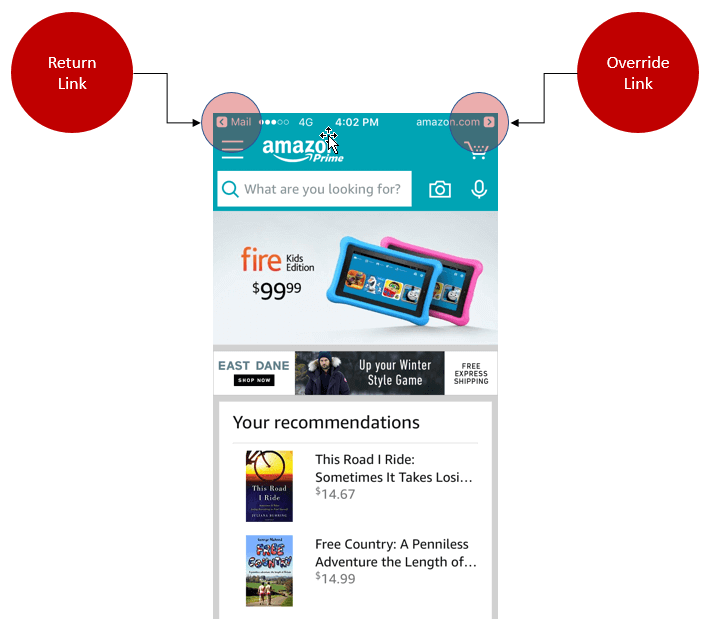
Image: Apsalar
iOS remembers this decision and routes subsequent Universal Links to the mobile browser instead of the app. Some experts argue* that it’s too easy for users to disable universal links without realizing it (or know how to undo it), resulting in a poor user experience and leading users to assume the app itself is broken.
How Deep Links with Push Notifications Can Boost User Engagement
A timely, personalized push message can be incredibly effective in engaging users. But a targeted, well-written notification that gets users excited about a new feature or promotion only to drop them on the home screen? Talk about a wasted opportunity.
Here are a few deep linking examples for your push notifications to delight users and boost engagement, conversions, and retention.
Deep Link to Specific Promotions and Products
Take users directly to the relevant category page or product listing.
Deep Link to New Features
You’ve released an exciting new feature, but it’s taking users a while to discover it on their own. Help them learn and adopt key features or functionality faster.
Deep Link to Location-Based Content (requires location access)
Send a push notification with a deep link to a nearby restaurant’s page or coupon while a user is in the area.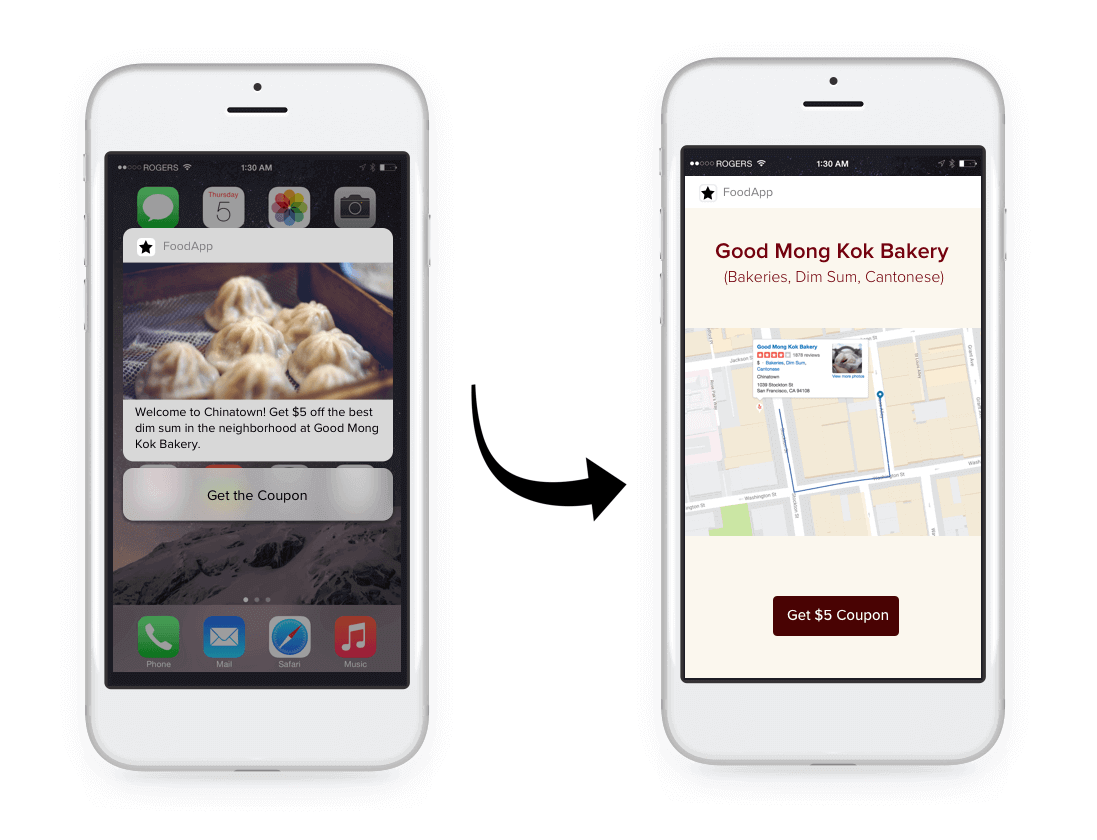
Deep Link to Breaking News and Trending Content
Keep users informed of the latest news as it happens, without searching or navigating content categories. 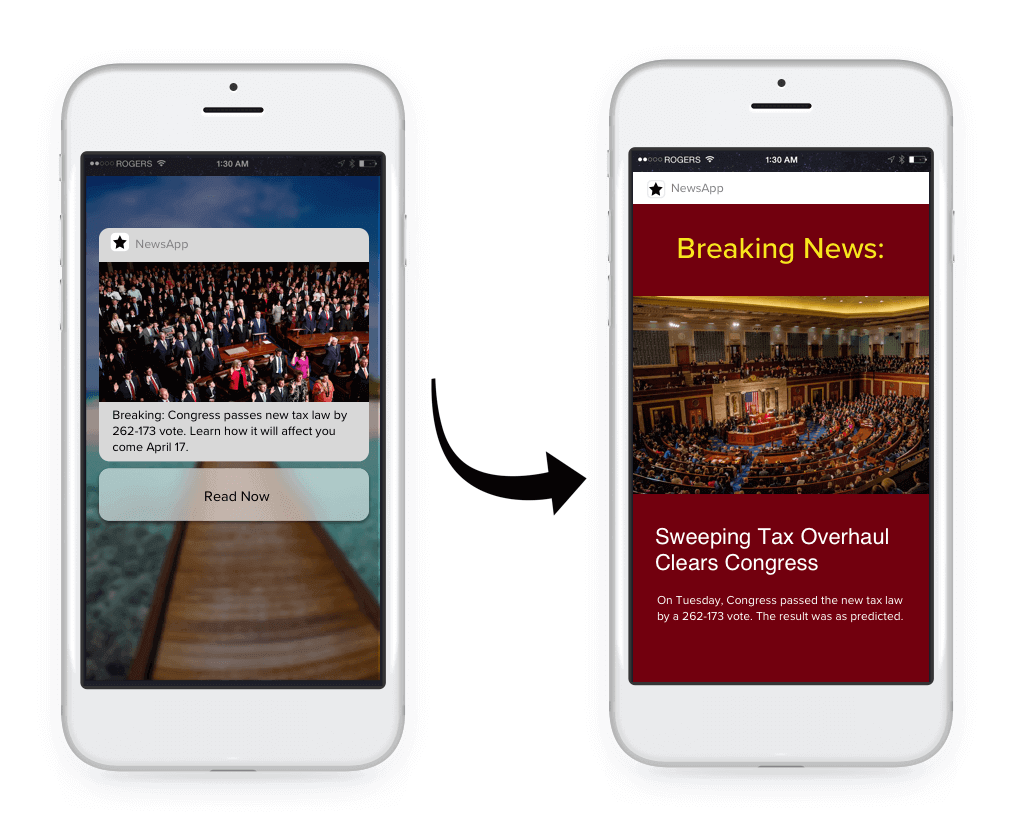
Deep Link to Personalized Content
Share updates on the artists or content topics a user has shown interest in, related products based on purchase history, a new message in their inbox, etc.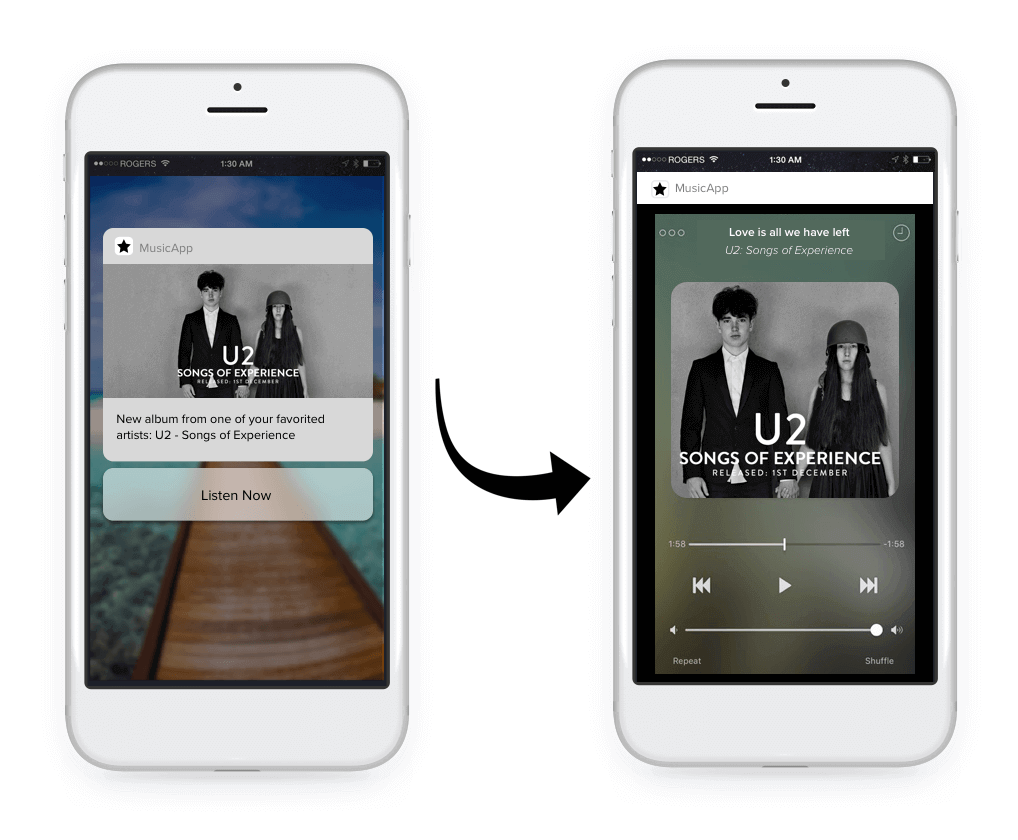
Deep Link to Personalize the Onboarding Experience
Bring new users who weren’t successfully activated back into the onboarding flow with special incentives, or automatically apply a clicked-on promo code to their first order.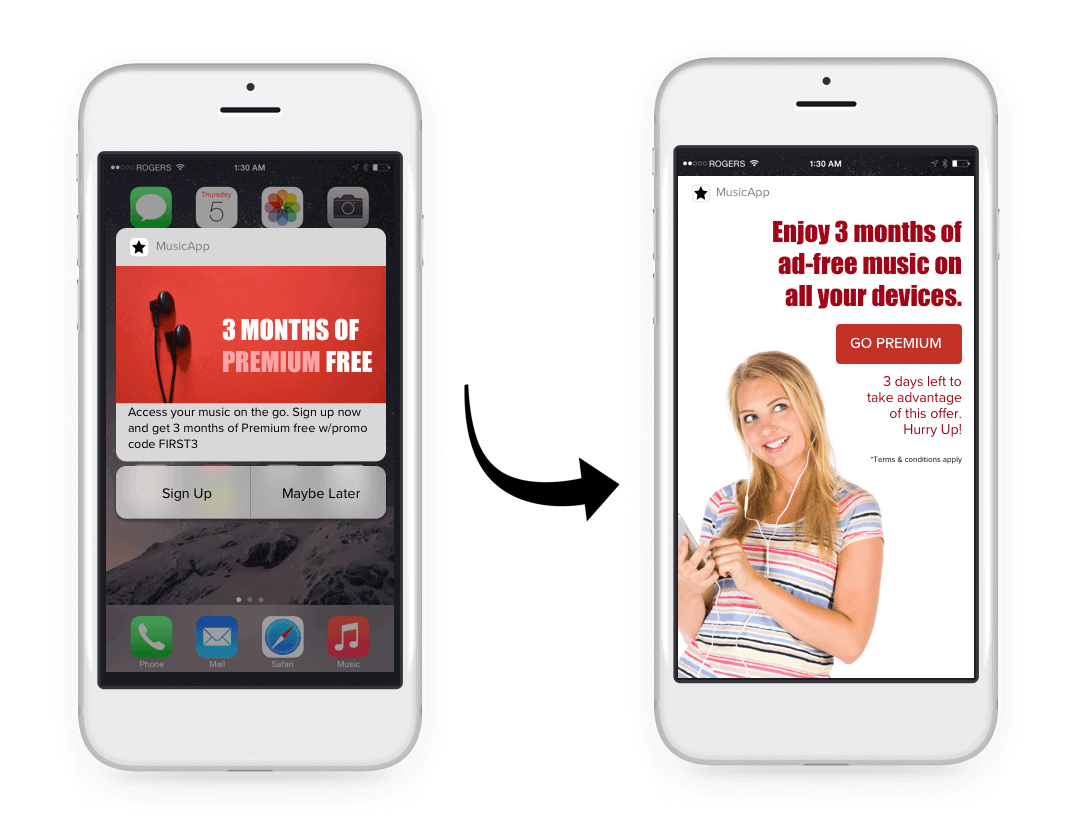
Deep Link to Recapture Abandoned Carts
Send users back to an abandoned shopping cart, or a specific page in the checkout process.
Deep Link to Improve Re-engagement Campaigns
Inactive users aren’t opening your app, so you need to use external channels like push notifications to reach them. Use deep links to send these users straight to your stickiest in-app content, or encourage actions that are proven to re-engage users.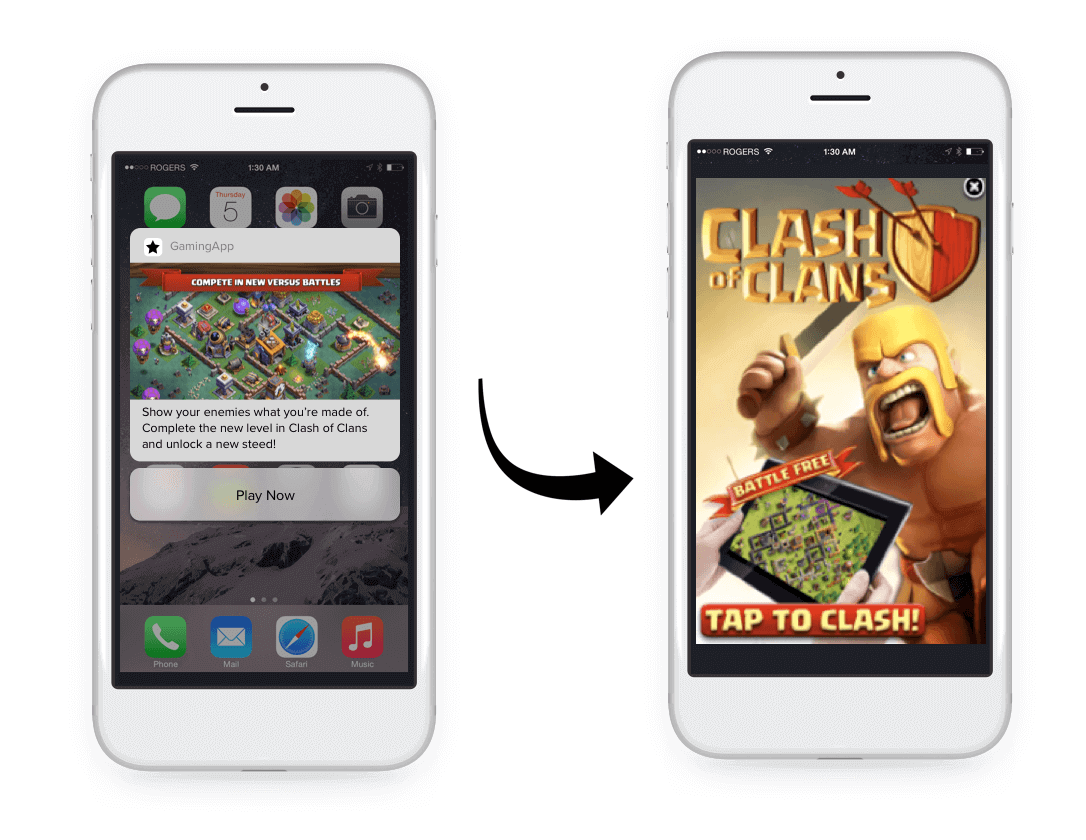
Deep Link to Enable Partnerships with Other Apps
Partnering with other apps can help you provide an even better user experience. For example, Yummly partnered with Instacart* to allow users to add recipe ingredients for delivery with a single tap. Yelp and OpenTable once partnered to make reserving a spot at a hot restaurant quick and easy.
Using deferred deep links* through a service like Branch can ensure users who don’t have the partner app installed are sent to the proper place.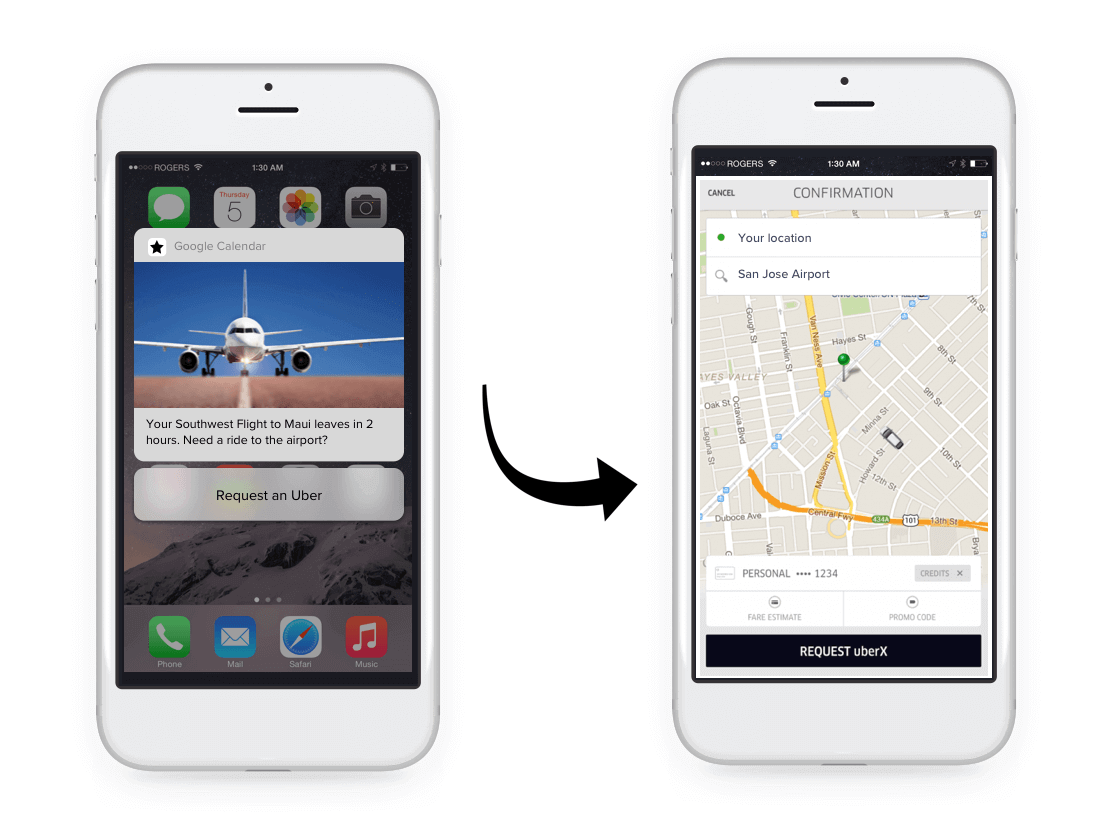
Deep Linking Mobile Apps the Right Way
Deep links are a powerful mobile marketing tool. But like any tool, you have to know how to use them properly to reap the benefits.
Because deep links take users directly to in-app content, it can take them out of your intended ideal user flow. You need to be strategic about how you use deep links, especially when it comes to new users.
Take a look at each screen in your app. If you dropped a new user on that page, would they understand what your app does? Would they need to have registered an account, added billing info, etc., in order to complete the desired action?
Deep links should take users directly to the intended content without any required logins or interstitial pages disrupting them. Carefully plan how your deep linking strategy will work with the structure and logic of your app in order to enhance the user experience — not interrupt it.
When paired with CleverTap’s powerful personalization features and behavioral analytics, deep linking from push notifications lets you customize the user experience to wow your users and grow your app.

Want to integrate deep linking into your marketing strategy? Test drive CleverTap today.
Subharun Mukherjee 
Heads Cross-Functional Marketing.Expert in SaaS Product Marketing, CX & GTM strategies.
Free Customer Engagement Guides
Join our newsletter for actionable tips and proven strategies to grow your business and engage your customers.















































